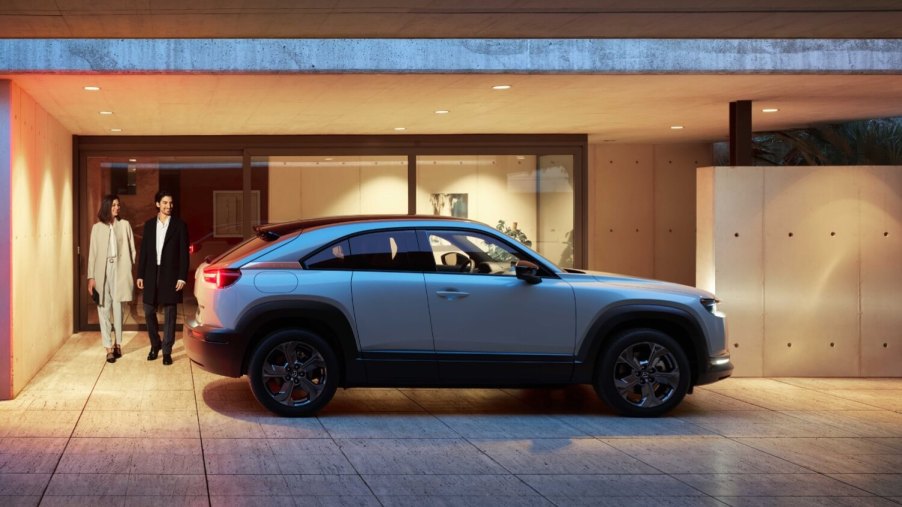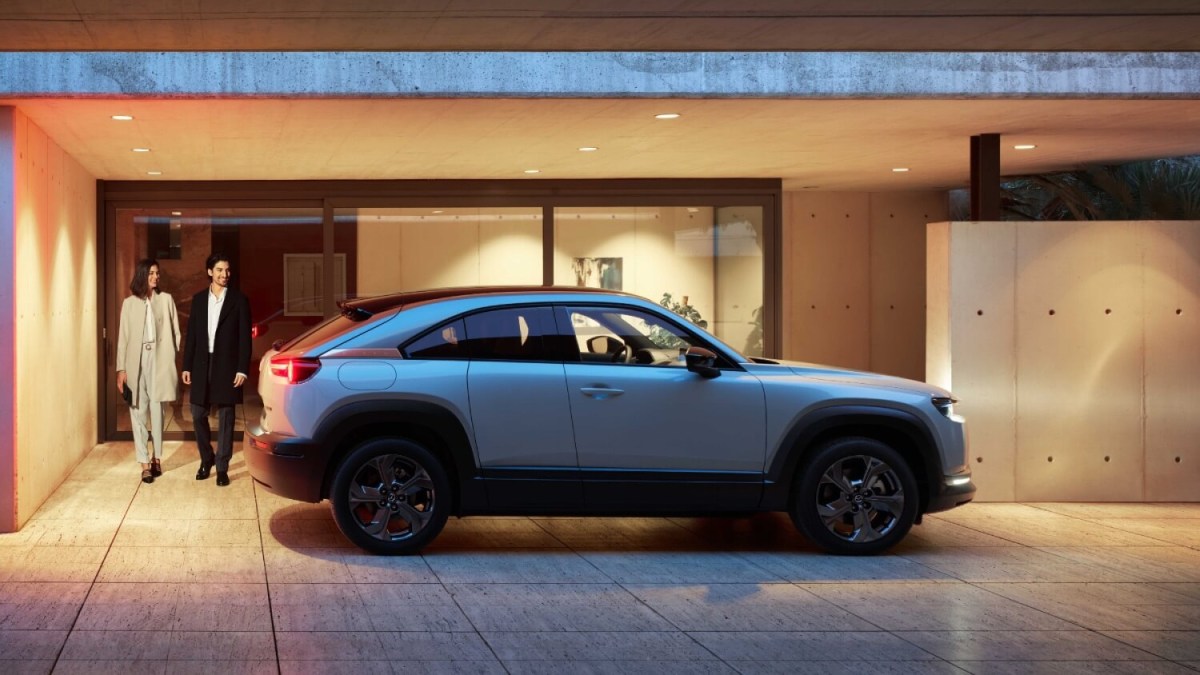
What Does MX-30 Stand for in the Mazda MX-30?
Mazda continues to impress with its portfolio of sweet rides. From the MX-5 Miata to the CX-50, there’s a Mazda for nearly everyone. But not every Mazda model was met with critical acclaim. The Mazda MX-30, for example, earns snickers instead of praise, despite being the automaker’s first fully electrified model.
So, what’s the story behind the MX-30, Mazda’s first dedicated electric vehicle? And what does the MX-30 actually mean? We’ll share some history and information behind the name, its meaning, and the EV itself.

A brief look-back history of the Mazda MX-30
Looking back, the Mazda MX-30 had good intentions. Mazda shared the announcement of its arrival in a 2019 press release, enthusiastically introducing its first mass-production EV at the 2019 Tokyo Motor Show. And it served as the automaker’s third official new-generation model.
At first glance, the MX-30 shared much of the bones as the CX-30 compact SUV. However, under the hood, instead of the zoom-zoom-inspired turbocharged engine, there’s an electric motor. An 80.9-kilowatt electric motor powers the front-wheel-drive EV.
Unfortunately, the Mazda MX-30’s electric power doesn’t pack the punch you’d expect from the automaker. With the 33.5-kWh battery, the MX-30 only cranks 143 horsepower and 200 lb-ft of torque. That’s the least powerful Mazda in the lineup, which is what inspired the lackluster consumer response and even a few jeers upon its initial release.
What the MX-30 name means
If you know anything about Mazda, you know the automaker is very intentional about every vehicle it produces, even the MX-30. And it fell in line with other “MX” model names, too. Inside EVs shared the early concept speculation that the MX-30 was a reference to the MX-3.
Garage Dreams revealed that MX stands for “Mazda Experimental Project,” with emphasis on the “X.” Each series of numbers then represents the linear and exact project number for the model.
So, the MX-30 falls in line with others like the MX-5 Miata, which represents its size and class, the CX-5, which stands for “Crossover Experimental Project Number 5,” and the RX-7, which stands for “Rotary Experimental Project Number 7.”
Mazda said the smaller battery pack in the MX-30 was intentional, too. Citing that most driving distances are shorter, 30 miles or less daily, the more efficient and eco-friendly battery was just as much a consideration as the model’s electrification.
It seems that Mazda went all-in on creating the most environmentally conscious vehicle, from the smaller battery and reduced power right down to the premium sustainable materials in the cabin.
The latest news and current state of the Mazda MX-30
Mazda says the MX-30 is perfect for the “typical American” drive, offering an estimated 100 miles on a full charge. It’s a nice ride in terms of comfort and convenience, but likely more of a placeholder EV model.
Speculations are that Mazda intends for the MX-30 to be its California vehicle for now while a better, more impressive EV lineup is in the works. Because of the stricter California regulations, the MX-30 is an ideal fit to sell there. And that just reinforces how intentional Mazda may have been with this sometimes-laughed-at model introduction.
The Mazda MX-30 may not be the most impressive model in the portfolio. And despite the sneers upon its initial release, it does seem to serve a valuable purpose. It’s the automaker’s first official, dedicated EV and likely the first of many to come. Mazda’s not sweating the guff for now. And if you’re in California, the MX-30 might be the perfect-fit EV for you.


